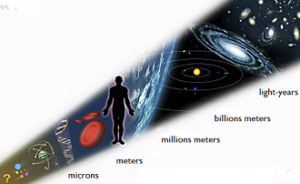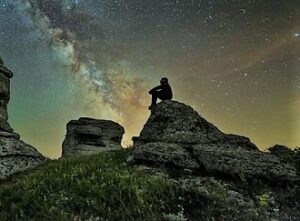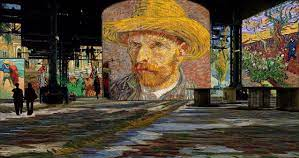
Arquivo para a ‘Noosfera’ Categoria
Emptiness and hyperpolitics
The subject that should interest theologians first interests philosophers and writers like Julian Barnes (The Sense of an Ending), which won the Man Booker award, wrote: “I don’t believe in God, but I miss him” while skeptical Peter Sloterdijk wrote: “In a monotheistically conditioned culture, declaring that God is dead implies shaking all references and announcing a new form of world” (Slotertijk, 1999, p. 59) and implies abandoning the project of planetary unity.
and writers like Julian Barnes (The Sense of an Ending), which won the Man Booker award, wrote: “I don’t believe in God, but I miss him” while skeptical Peter Sloterdijk wrote: “In a monotheistically conditioned culture, declaring that God is dead implies shaking all references and announcing a new form of world” (Slotertijk, 1999, p. 59) and implies abandoning the project of planetary unity.
In an opposite line, English literature professor and writer Terry Eagleton wrote “Culture and Death of God”, identifies the Enlightenment substitutes for this death beyond reason and his most finished work: the Modern State, some ways of rationalizing this “death” in addition to the State itself: science, humanity, Being, Society, the Other, desire, life force and personal relationships, calling them “forms of displaced divinity”.
As substitutes, Sloterdijk elaborates in “in the same boat: essays on hyperpolitics” (1999): “a literary wave begins that speaks of nothing but the State, life in society, human formation” (Sloterdijk, 1999, p. 58), says Sloterdijk reflecting Nietzsche that the Theological Code is part: “that which inspires our time with hope and horror; something is dead and can only fall apart faster or slower, but somehow life and civilization advance and crystallize into ununderstood novelties” (Sloterdijk, 1999, p. 60) and this is not just about the new strain of the coronavirus that scares, but of novelties that advance in polarized and radical discourses.
He recalls that it is not just the speeches of some political adventurer from countries with political upheavals, but: “You can see the political cast parading through the media and we are reminded of the premeditated inappetence of municipal tournaments” (Sloterdijk, 1999, p. 64) , you know that there are here and there: “convincing megalopaths of the old guard” (idem), but a “global disproportion between the forces in need and the existing weaknesses” (ibid.), or to put it another way, statesmen capable of dealing with contemporary crises .
He calls some of these characters that appear here or there “globality state athletics”, but emphasizes that it has not yet been written highlighting the “required consciences” that it should not have for a “profession: political”, a residence with opacity, a program with which it is difficult to belong, in the Moral aspect of small works, no passion: an absence of relationship, evolution towards self-recruitment based on knowledge and they should be athletes of a “synchronous world” (p. 65).
Sloterdijk’s hyperpolitics sentence is drastic: “the theme of the ‘conservative revolution’, experienced two or three generations ago” (p. 67) in which he predicted a certain kind of new fundamentalist wave, predicted some contemporary politicians like Donald Trump and Boris Johnson they show not only that it was no accident, but that they continue to be on the lookout for a new policy that emerges in the aftermath of the “Krause syndrome” (German politician involved in corruption scandals), showing that it is not the work of chance, it is not just the absence from Geist (spirit) or from the lack of subjectivity and acceptance of planetary cultural diversity, “politics appears as the equivalent of a collective-chronic near-accident on a road covered by fog” (Sloterdijk, 1999, p. 69). The book was written well before the rise of the conservative wave.
In his final sentence Sloterdijk calls for “hyperpolitics to become the continuation of paleopolitics by other means” (p. 92).
Sloterdijk, P. in the same boat: essay on hyperpolitics. Trans. Claudia Cavalcanti. São Paulo: Estação Liberdade, 1999.
Time to change and rethink
The Pandemic did not cause changes in our behavior, most want to go back to the old normal: rushing, a nervous and complex day to day, ambitions that are mixed up with healthy and possible goals, in short, what the philosopher Sloterdijk called “frivolities”, however the crisis did not pass and a 4th one is already admitted. wave.
back to the old normal: rushing, a nervous and complex day to day, ambitions that are mixed up with healthy and possible goals, in short, what the philosopher Sloterdijk called “frivolities”, however the crisis did not pass and a 4th one is already admitted. wave.
Of every 100 new infections reported in the world, 62 are in Europe, according to the news agency Reuters, the region registers 1 million infections every two days.
The wisdom that involves an entire universe of human life, from health to politics, the true well-being that includes justice and empathy, even with a pinch of nature was not enough, the result is a crisis that approaches and swells, look at the infinity of the universe and its mysteries should become humility, but arrogance is everywhere from unbelievers to skeptics, from low culture to bookish and encyclopedic cult, a real change of thought, as Morin wants, has not happened.
All this that should have inspired greater feelings of love, solidarity and peace did not happen, the Pandemic did not give a truce of hostilities and radicalizations, the result cannot be other than a catastrophe, regardless of elected governments and trends, since the polarization always leads to two extremes and does not let up.
There is anything in the air, the human spirit knows when things are out of place, they do not always know exactly where they are due to lack of harmony and spiritual evolution, material human development is not enough, it is important if it is sustainable, it is necessary that the human soul follows this evolution and it is not what you see, you see “frivolities”.
Several European countries are thinking of lockdown, an energy crisis is also in the sights of many European countries, dependent on external suppliers, according to data from Eurostat, the EU’s statistical agency, the increase in gas has caused inflation to rise in 19 countries of the euro zone, and it impacts everything but mainly energy since 90% of the gas comes from Russia, and a fifth of the electricity is produced using gas.
Remember that it is winter in Europe and this consumption tends to grow for heated environments and longer stay indoors.
In the Christian liturgy, Advent begins on the weekend, it is not just the celebration of Christmas, the first week is the waiting for a new coming of Jesus, called Parusia, and it is not just the end of the world, but also the great crises God is not indifferent, of course to those who believe, his intervention is always possible in an unexpected way.
Hope is thus an engine of our lives, but we need to be attentive as the liturgy of this period says (Lk 21:34): “Take care that your hearts do not become insensitive because of gluttony, drunkenness and the worries of life, and that day do not suddenly fall upon you, for that day will fall like a trap on all the inhabitants of our land”.
The Civilization Crisis
 It is not just an idea of the apocalyptic, the pessimistic and the tragedies, dark spirits who do not really reflect on reality, it is those who think humanism, who look to a polarized, fragile and powerless life in the face of a pandemic (see Europa in the previous post) is the crisis of fragility that does not see itself as fragile.
It is not just an idea of the apocalyptic, the pessimistic and the tragedies, dark spirits who do not really reflect on reality, it is those who think humanism, who look to a polarized, fragile and powerless life in the face of a pandemic (see Europa in the previous post) is the crisis of fragility that does not see itself as fragile.
Arrogants, pseudo-sages, and pseudo-prophets are on call, but even an optimist like Edgar Morin bends over when he sees a system that cannot deal with its fundamental problems, it disintegrates, thus began his recent lecture on the metamorphosis of humanity, he told the event : “he becomes even more barbaric”, but remember that this is not the first and probably not the last metamorphosis of humanity, we were at the origin (he said for over 100,000 years) hunters and gatherers.
There was no army, no state or classes, but little by little some groups wanted to dominate others, this happened in India, China and the Middle East, in the Andes where an Inca Empire was organized and in Mexico (where he gave the lecture).
These societies have metamorphosed for better or worse, he has not made a statement about this, but he thinks that a metamorphosis over our nation-states is possible.
It states that it is necessary to have hope, but hope is not certainty, the hope that in the past was a belief now, but if hope exists it is the necessary leaven for great transformations, and it is understood that this is the moment we are living this reality, in a postmodern or post-postmodern world, there is a transformation.
It remains for us to know which one leads us to destruction, and which one is truly the bearer of hope, it doesn’t give great tips, but let’s do an exercise.
The first great destruction is war, with the arsenal of ultra powerful weapons, even interplanetary, there are several objects around the planet, it is necessary to defend peace with the same force that we defend justice, a war would now be a catastrophe.
The second major destruction is social imbalance, insecurity and the lack of a sustainable plan for the use of natural resources, the large meetings only discuss the issue of pollution and deforestation in some regions of the planet, when they should discuss the planet as a All in all, nature shows signs of exhaustion and a greater imbalance in natural forces, of planetary proportions, is expected.
As Edgar Morin says, it is necessary to have hope, we have already gone through other stages of the civilizing process through similar situations, of course the proportion is now planetary.
Edgar Morin – Do esgotamento à metamorfose dos sistemas – YouTube
Distances in light years events in millions of years
If on a scale of human life we speak at most hundreds of years, on a planetary scale we must speak of millions and even billions of years, if in terms of distance we can speak of thousands of kilometers on a planetary scale, in astronomical terms this scale is millions of light years, the time light travels per year.
on a planetary scale we must speak of millions and even billions of years, if in terms of distance we can speak of thousands of kilometers on a planetary scale, in astronomical terms this scale is millions of light years, the time light travels per year.
This is not even to say that extraordinary events do not happen, because in terms of planetary and universal life billions of years have passed, so at some point in time this could happen, like the end of the dinosaurs, the ice age and changes in the planet’s geology that have already occurred, and neither that it will occur tomorrow or in the next few years, but at some point in time they may occur.
The volcano on the island of La Palma shows signs that it may be ending its eruption, so the catastrophes that were suggested (hypothetically and with a rare possibility of occurring) will not happen, but it doesn’t mean that others elsewhere on the planet cannot happen, earthquakes and weather events have occurred and caused tragedies such as Fukushima in Japan in March 2011.
This pandemic also seems to be at the end of its cycle, although Europe is alert, but there more than here the number of people who have resisted the vaccine is very large.
We must always be alert, life on the planet is at risk, the problem of environmental balance, the social problem arising from the pandemic crisis, but which was huge before it, the eternal danger of wars over market disputes and religious intolerance is always hanging around us.
A great international agreement that unites peoples and establishes a truce in conflicts, that brings solidarity between peoples and resolves the ecological balance, could be a great encouragement for a civilization in crisis.
In spiritual terms it means that humanity must also evolve at this point, and the signs are not the best, so it is not a matter of apocalypse or threat, when the human spirit releases all energy contrary to its well-being and progress moves towards an abyss and towards tragedies, the day when a great night will fall on men seems to be at hand, so says the Bible reading (Mk 13:24-15): “In those days, after the great tribulation, the sun will be darkened and the light it will no longer shine, the stars will begin to fall from heaven and the forces of heaven will be shaken”, but the reading immediately afterwards also indicates (Mk 13:32): “no one knows about that day and hour, not even the angels of heaven , nor the Son, but only the Father”.
So let’s live life and let’s favor what is good for all humanity, not just for groups or ideologies, life needs to go on and it is necessary to fight for it.
Nature, man and the divine
It is the development of human culture that can develop these potentialities, as Morin says: “It is certainly culture that allows the development of the potentials of the human spirit” (Morin, 1977, p. 110), it depends, therefore, on the development of a culture of peace, solidarity and of preserving life within the human spirit.
these potentialities, as Morin says: “It is certainly culture that allows the development of the potentials of the human spirit” (Morin, 1977, p. 110), it depends, therefore, on the development of a culture of peace, solidarity and of preserving life within the human spirit.
We are part of nature and the anthropocentric concept needs to be modified, but it is “only at the level of individuals who have possibilities of choice, decision and complex development that impositions can be destructive of freedom, that is, become oppressive” (ibid.), but this depends on the development of culture, or on the sphere of thought (Teilhard Chardin’s Noosphere) Morin will say: “It is certainly culture that allows the development of the potential of the human spirit” (idem ), depends, therefore, on the development of a culture of peace, solidarity and preservation of life that cannot exclude Nature.
Morin will say in the chapter of his conclusion about the “complexity of Nature”, that in the so-called “animistic” universe, or mythological in the case of the Greeks, “human beings were conceived in a cosmomorphic way, that is, made of the same fabric as the universe” (Morin 1977, p. 333), and at this point Teilhard Chardin develops the concept of a deified universe, or said within Christian cosmology: “Christocentric”, which is why he was for some time accused of pantheism (many gods).
Science penetrates more and more into a universe full of surprises, from the Higgs boson to the Hubble constant that establishes both the size and the age of the universe, but is this the consolidation of the unity of physics, called today as standard Theory of Physics , but this constant has already been modified.
In astronomical terms there is the measure megaparsec, which is equivalent to 3.26 million light years away, Hubble first time measured 500 km per second per megaparsec (km/s/Mpc) earth´s diameter, but this measurement now varies between 67 and 74 km /s/Mpc.
The nature of the interior of the planet also varies and there are many uncertainties, due to the exposure of the Cumbre Vieja volcano in the Canary Islands, many serious scientists and researchers, there are many fake News on the subject, it is clear that there are still no clear theories about nature of these planetary organisms, always present in the stories.
The dialogue between different worldviews, far from simplifying or reducing the thinking of their culture, broadens and helps to develop the others, but it is necessary to be clear that each one has a contribution to make, and each one can remain in their cultural identities, for the most part of them there is always a precedence of the divine over human love.
For many worldviews the divine means to be able to dialogue with the human penetrates the mysteries of the universe and thought (the noosphere), in the Christian worldview this is explained in two steps: Love God and love your neighbor, so says the biblical passage (Mc 12, 29-31) on Pharisaism’s questioning of Jesus about what the commandments were: “Jesus replied: “The first is this: Hear, O Israel! The Lord our God is the only Lord. You shall love the Lord your God with all your heart, with all your soul, with all your mind, and with all your strength! The second commandment is: You shall love your neighbor as yourself! There is no commandment greater than these”.
Thus, Pharisaism will relativize the first “commandment” to prioritize the second, only love of neighbor matters and defines the Christian, in general they reduce to their group and do not dialogue with other cultures, the second (love God above all things) , denies the inclusion of the second commandment and moves towards fundamentalism and the denial of science as a culture, in addition to also denying other non-Christian worldviews.
The dialogue between different worldviews, far from simplifying or reducing the thinking of their culture, broadens and helps us to develop the others, but it is necessary to be clear that each one has a contribution to make, and each one can remain in their cultural identities.
CHARDIN, T. (1997) Man’s place in nature, trans. Armando Pereira da Silva, Ed. Instituto Piaget, Lisbon.
MORIN, E. (1977) The nature of NATURE. Lisbon PUBLICATIONS EUROPA-AMERICA, LDA., 1977.
The divine environment and the human phenomenon
Chardin’s worldview on the human phenomenon ranges from cosmogenesis, the origin of the universe and of life to the complexification of nature and the place of man in it, what the pandemic shows is that this complexification grows and even science has limits to deal with it, however, this pandemic can bring new horizons, when it thinking and clarifying it needs science.
cosmogenesis, the origin of the universe and of life to the complexification of nature and the place of man in it, what the pandemic shows is that this complexification grows and even science has limits to deal with it, however, this pandemic can bring new horizons, when it thinking and clarifying it needs science.
Among his various works, Teilhard Chardin makes a singular journey between The divine environment, written between November 1926 and March 1927 and the Human Phenomenon, written between July 1938 and June 1940, which form an “inseparable whole” also says edition I have of Editorial Presença de Lisboa, Portugal.
Singular because it transits from the divine to the human, as the names of the works attest, without slips or ravages, it shows us the “need for the connection between science and religion equally affirmed by Einstein”, an expression by Helmut de Terra, friend and admirer of Chardin. Chardin initiates the divine environment by realizing “the confusion of religious thought in our time” (page 41) and attests that the man of our time “lives with the explicit awareness of being an atom or a citizen of the Universe” (idem).
The timeliness of the text is because the author affirms at the beginning of his book something that has a lot to do with our days, a collective awakening that a beautiful day “makes each individual aware of the true dimensions of life, necessarily provokes in the human mass a profound religious shock, both to slaughter and to exalt ”(ibidem).
This is because the world is too “beautiful: it is to him and only to him that they should worship” (p. 42). What is then the “divine environment”, the world (in our case we explore the universe’s worldviews) will not be more and more fascinating and it would not be and it would be “eclipsing our God” (idem), and there is a connection, in the view of part of Christianity, between God and matter, the Eucharist, she and she alone can create a real sense of reconnecting us to the divine, “this is my body and my blood” said Jesus, and those who eat will have access to eternal life.
Chardin says “the slowly accumulated tension between Humanity and God will reach the limits set by the possibilities of the World, and then it will be the end” (p. 177)… that we must wait not as a catastrophe but as an“ exit ”to the world to which we must collaborate with all our Christian forces without fear of the world, because his enchantments could no longer harm those for whom he became, in addition to himself, the Body of the One who is and the One who comes ”.
Chardin, Teilhard. (no year). O meio edivino: ensaio sobre a vida interior (The divine environment: I teach about the inner life). Lisbon: Editorial Presença.
Man’s place in nature
Edgar Morin we’ve already done some posts here. However, we want to dialogue with the anthropocentric concept that dominates many studies and increasingly we see that it is a limitation since nature has its own course, and the brutal interference of man can modify and harm this course.
want to dialogue with the anthropocentric concept that dominates many studies and increasingly we see that it is a limitation since nature has its own course, and the brutal interference of man can modify and harm this course.
According to Ways (1970) cited in Chisholm (1974) there is a tendency in Western epistemology to objectify nature to see it “from the outside”, and this is responsible for the arrogant and insensitive way of dealing with the natural world, according to the author’s own attitude of separation of man from nature constitutes the basis of the growing human knowledge of nature, being, therefore, an anthropocentric interpretation of the evolution of the natural world.
On the other hand, the complexification of nature in man is undeniable, as an animal that is aware, or in other words aware of its own conscience, which can lead to another extreme, which is the “internalization” where culture and nature are confused , where subjectivism can be a responsible trend for this aspect.
The paleontologist Teilhard de Chardin, in his work “The Human Phenomenon”, observes that there is no anatomical or physiological trait that distinguishes man from other higher animals, on the other hand, it has the zoological characteristic that makes it a being apart in the animal world. , is the only one that inhabits the entire planet, another characteristic that comes from its form of consciousness is its organization as consciousness and thought structure, which Teilhard de Chardin calls “noosphere”, a sphere of thought that is also world-wide.
As for man, it remains to be seen, and even science does not know, if it is a mere superficial accident that has happened or if there is an intention in him since the Universe was created, whether Big Bang or not, reflects Teilhard Chardin: “that we should consider it – about to sprout from the smallest fissure anywhere in the Cosmos – and, once it has arisen, unable to waste all the opportunity and all the means to reach the extreme of everything it can reach, outwardly of Complexity, and inwardly of Consciousness” (CHARDIN , 1997).
CHARDIN, T. (1997) Man’s place in nature, trans. Armando Pereira da Silva, Ed. Instituto Piaget, Lisbon.
CHISHOLM, A. (1974) Ecology: a strategy for survival. Rio de Janeiro: Zahar.
Teilhard Chardin and the Christian worldview
The writings of Teilhard de Chardin, whose writings  were given a “warning” by the Vatican in 1962, had this mark removed from their records by Pope Francis in 2017. This year there was a plenary session of the Pontifical Council for Culture where, unanimously, the petition sent by Pope Francis asking him to renounce the “monituum” (warning) of the writings of Father Teilhard de Chardin, with this “The Future of Humanity: New Challenges for Anthropology” has been updated.
were given a “warning” by the Vatican in 1962, had this mark removed from their records by Pope Francis in 2017. This year there was a plenary session of the Pontifical Council for Culture where, unanimously, the petition sent by Pope Francis asking him to renounce the “monituum” (warning) of the writings of Father Teilhard de Chardin, with this “The Future of Humanity: New Challenges for Anthropology” has been updated.
The participants, who included high-level scientists as well as bishops and cardinals from Europe, Asia, America and Africa, not only approved but applauded the Pope’s text.
Furthermore, texts were mentioned with “explicit references” by Paul VI, John Paul II and Benedict XVI to the paleontologist, philosopher and priest Teilhard de Chardin, with this finally Christian anthropology and worldview can be updated and placed within the current scientific vision, which also evolves into a broader view of the universe and life.
To conclude, they also cited that the lines throughout Pope Francis’ own Encyclical Laudato Si helped “this act would not only recognize the genuine effort of the pious Jesuit to reconcile the scientific view of the universe with Christian eschatology, but would also represent a formidable stimulus. for all philosophers, theologians and scientists willing to cooperate with a Christian anthropological model” which is already described in the outline of Laudato Si, and “fits naturally into the marvelous plot of the cosmos”.
Father Teilhard de Chardin was constrained by disciplinary sanctions from the Holy Office in the 1920s, for his opinions expressed in his unpublished writings, but this did not prevent him from his work, from where he conceived the idea of Omega Point (one level maximum complexity and awareness in the direction that the universe evolved) and added to the concept of Christ as the Logos, or “the Word” that embodies human vision through language, in addition to its central concept of the Noosphere (the sphere of thought).
At a time when the anthropologies of original societies, of colonized peoples in search of their true identities along the path of decolonization, are re-discussed, on the religious side Chardin responds to the cry of voices of Christianity that ask for a necessary anthropological update, without losing unity and Christian consciousness Christocentric.
Among Chardin’s works, the following stand out: The human phenomenon, The place of man in nature and The divine environment stand out in his works.
Many times in life he revealed the wish to die on Resurrection Day (Easter Day), his wish was granted. He died on April 10, 1955, an Easter Sunday after attending Mass at St. Patrick’s Cathedral in New York, and his writings began to gain great popularity.
The plague, the truth and blindness
There comes a time when resigning oneself to the disease and not setting new paths is also cowardly, says Camus in his chronicle The Plague: “But there comes a time in history when he who dares to say that two and two are four is punishable by death”, as it is “…an idea that might make you laugh, but the only way to fight the plague is honesty”.
not setting new paths is also cowardly, says Camus in his chronicle The Plague: “But there comes a time in history when he who dares to say that two and two are four is punishable by death”, as it is “…an idea that might make you laugh, but the only way to fight the plague is honesty”.
Overcoming fear, and for many the pain, “I understood that all the misfortune of men came from not having a clear language. So I decided to speak and act clearly, to put myself on the right path.” This implies not only wisdom and courage, but also overcoming human blindness.
Thus: “From the beginning of history, the scourges of God have placed the proud and the blind at his feet. Meditate on this and fall to your knees”, and in the present case, a tiny virus brings all human wisdom and intelligence to its knees, so that they are not allowed to admit the infinite, the Love and the presence of a mystery in life.
Camus saw this not in a religious way, but in a true way: “The evil that exists in the world almost always comes from ignorance, and good will, if not enlightened, can cause as much harm as evil. Men are more good than bad, and that’s not really the point. But they are more or less ignorant, and this is what is called virtue or vice, the most desperate vice being that of ignorance, which thinks it knows everything and is then authorized to kill”, but hatred and war are waged.
The biblical figure of the blind Bartimaeus is very illustrative of human blindness, but this blind man was aware of his limitation, when he knew that Jesus approached him, he shouted for him to have pity on him, the apostles were bothered, but Jesus will ask, he shouted (Mk 10 :48-52): “Son of David, have mercy on me” Then Jesus stopped and said, “Call him.” They called him and said: “Courage, get up, Jesus is calling you!” The blind man threw off his robe, jumped up and went to Jesus. So Jesus asked him, “What do you want me to do for you?” The blind man replied: “Master, let me see! Jesus said, “Go, your faith has made you whole.” Instantly he regained his sight and followed Jesus along the way”.
The awareness of Bartimaeus’ blindness moved him, and the desire for cure bothered him even more, he who thinks he sees and sees everything in the shadows is blinder than Bartimaeus and as an excerpt from the chronicle The Plague says: “they denied, at last, that we had it was that people stunned that every day one share, piled up in the mouth of an oven, evaporated in greasy smoke, while the other, laden with the chains of impotence and fear, awaited its turn”.
Culture and the great crisis
After analyzing the aspects of homogenization and cultural colonization, Morin will analyze who the average man is and what culture he consumes, he says:
colonization, Morin will analyze who the average man is and what culture he consumes, he says:
“The language adapted to these anthropos is audiovisual, a language of four instruments: image, musical sound, word, writing. Language is all the more accessible insofar as it is the polytonic involvement of all languages” (page 45) and, therefore, it is not specific to new media that only enhances them, and it involves more an imaginary than “of the game that overflows the fabric of practical life” (idem).
This is because “the borders that separate the imaginary realms are always fluid, unlike those that separate the realms of the earth” (ibidem), so a man can participate in the legends of another civilization than adapt to the life of this civilization, and so Morin prepares to talk about the great crisis or great civilizing night, which Morin calls “great craking”.
As technical quality improves, it mediates artistic quality, says Morin: “they go up in industrialized culture (writing quality of articles, quality of cinematographic images, quality of radio broadcasts), but the irrigation channels relentlessly follow the main lines of the system (page 50).
Morin separates the cultural currents coming from Hollywood into three main currents: the one that “shows the happy end, the happiness, the success; the countercurrent, the one that goes from The death of a Traveling Salesman to No down payment [AC/DC Rock], shows failure, madness, degradation” (p. 51), but there is a third current that he calls ” black”.
This is “the current in which fundamental questions and contestations ferment, which remains outside the culture industry: it can partly usurp, adapt to itself, make publicly consumable certain aspects of, say, Marx, Nietzsche, Rimbaud, Freud, Breton , Péret, Artaud, but the condemned part, the antiproton of culture, its randium is left out” (idem).
Morin describes this anti-climax at the beginning of chapter 5 “The great ‘cracking”: “long playing records and radio multiply Bach and Alban Berg. Pocketbooks multiply Mlaraux, Camus, Sartes. The reproductions multiplied Piero dela Francesca, Masaccio, Césanne or Picasso” (p. 53), culture seemed to be democratized by the cheap book, the disc, reproduction, as recommended by Walter Benjamin, but the result was vulgarization, because the “culture cultivated” is neither the mainstream nor the specific in mass culture.
The imaginary leaves the rites, parties and dances and goes to radio, television and cinema, there “those ghost spirits, geniuses who permanently pursued archaic man and reincarnated in his parties” (page 62), now they are “rushed away by printed culture”, mass culture breaks “the unity of archaic culture which, in the same place, all participated at the same time as actors and spectators in the party, rhythm, ceremony” (p. 62), spectator and show are physically separate.
This transformation of a “party man” follows what we call audience, audience and spectators: “the immediate and concrete he becomes a mental tele-participation” (p. 63(, this mass media (now confused with the networks, which is something else), while “reestablishing the human relationship that destroys the printed material”, “it is at the same time a human absence, the physical presence of the spectator is, at the same time, a physical passivity.” (page 63 ).
Mass culture maintains and amplifies a “voyeurism”, more broadly: “a mirror and glass system, movie screens, television videos, glass windows in modern apartments, Plexiglas in Pullman cars, airplane shutters, always some something translucent, transparent or reflective separates us from physical reality” (pages 72-73) and all this was prior to the new media, depositing to them only this great “cracking”, is to ignore the construction (or historical deconstruction) of the imaginary , folklore and festivals, which began even before the last century with printed culture, enlightenment and idealism.
Attempts to reactivate “cultivated” culture are not lacking, as we have already discussed, through the same mass media that vulgarize and destroy the substance of human culture, there is no lack of vivid works by Van Gogh that Akira Kurosawa animated in cinema, of large public events with “ animated video-mapping” by Vang Gogh (made at the Atelie des Lumiéres, in Paris, photo), who presented in 2018 the work of Gustav Klimt, also animated.
The cultural crisis is not just its own work, its root is the thought and development of a mass culture of idealism, of an objectivism that ignores the human.
MORIN, Edgar. (1997) Cultura de massas do século XX. (20th century mass culture). trad. Maura Ribeiro Sardinha. 9ª. edição. Brazil, Rio de Janeiro, Ed. Forense.

